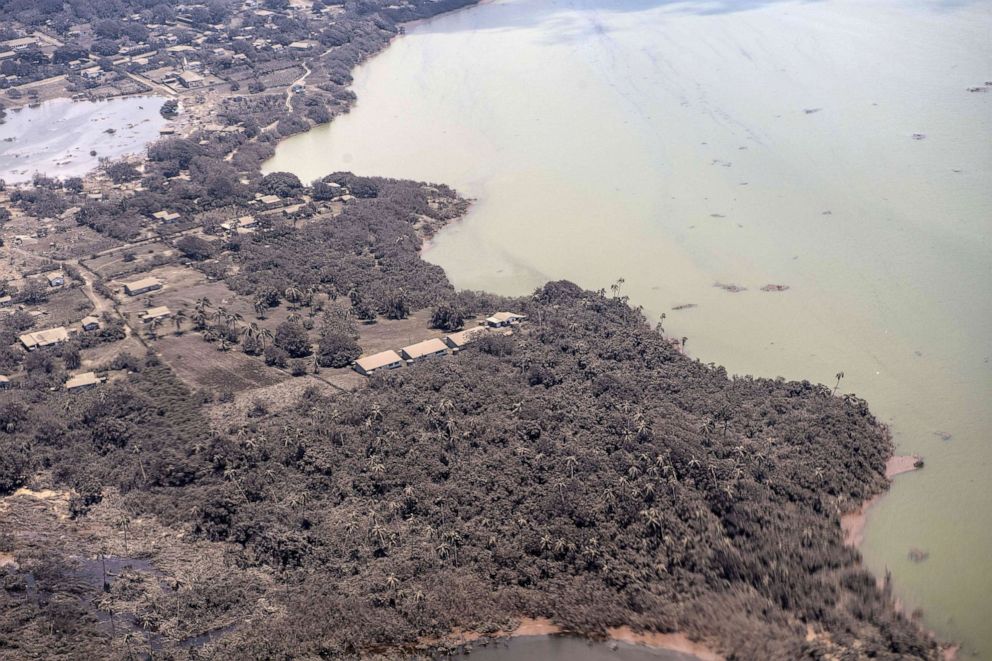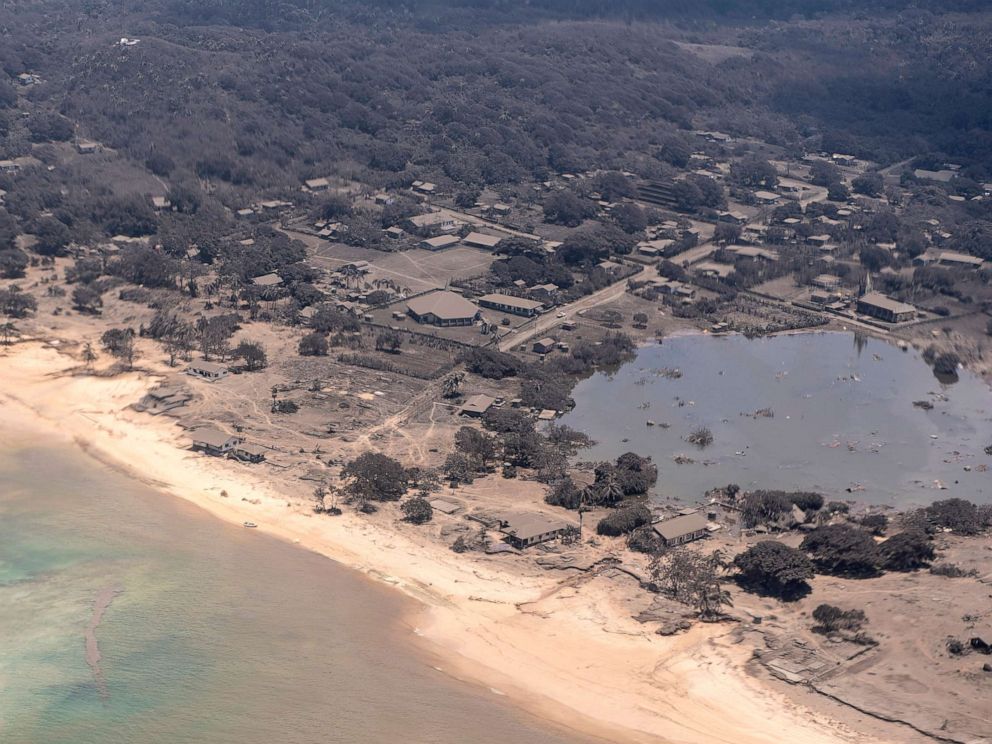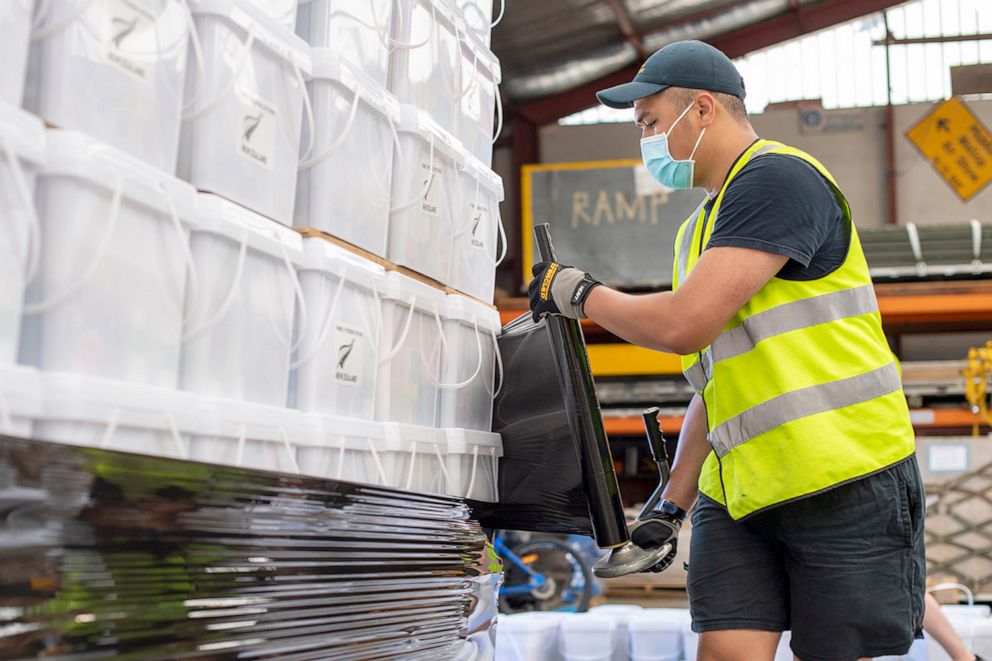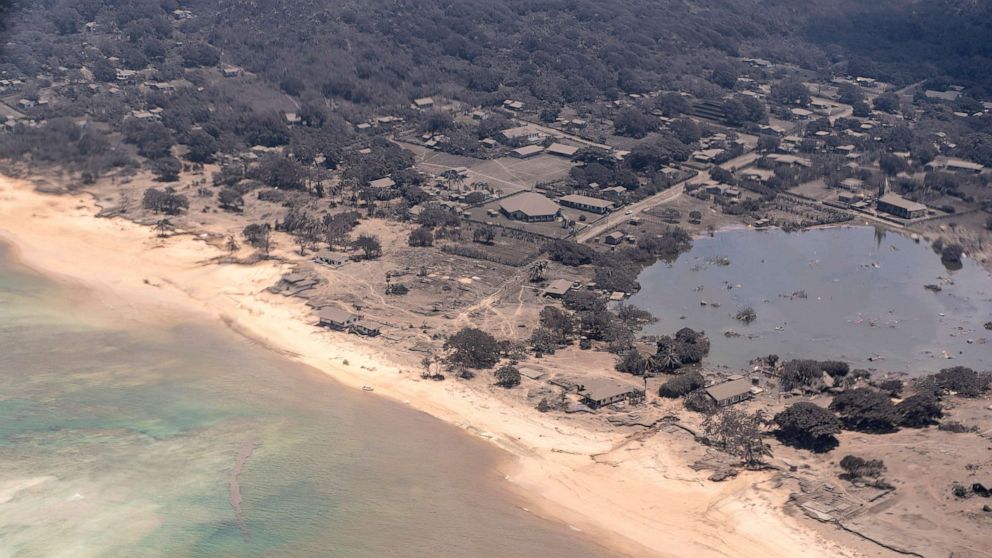Tonga government releases 1st statement since volcanic blast, described huge mushroom plume
For the first time since a massive undersea volcano erupted and caused widespread damage, the government of Tonga released its first statement on Tuesday morning, describing a huge mushroom plume that covered the entire South Pacific island kingdom and nearly 50-foot tsunami waves that crashed ashore and devastated villages.
International and domestic communication, including the Internet, had been severed since the blast of the Hunga Tonga Hunga Ha’apai volcano on Saturday. According to the government's statement, the volcanic eruption damaged an underwater fiber optic cable, cutting off communication to the outside world.
"As a result of the eruption, a volcanic mushroom plume was released reaching the stratosphere and extending radially covering all Tonga Islands, generating tsunami waves rising up to 15 meters, hitting the west coast of Tongatapu Islands, 'Eue and Ha'apai Islands," the government statement said.
The eruption occurred in the South Pacific, about 40 miles south of Tonga.

A damage assessment was underway on Tuesday and the government was relying on satellite phones and high-frequency radio to establish communication between the multiple islands that comprise the Polynesian kingdom. Government officials said communication with at least one island, Niuas, had yet to be restored.
At least three deaths have been confirmed, including the death of a British national, the government said. Also killed was a 65-year-old woman on Mango Island and a 49-year-old man from Nomuka Island, according to the statement.

Two people remain unaccounted for and numerous injuries have been reported, the government said.
The government said it is particularly concerned about the damage caused to the islands of Mango, Fonoifua and Nomuka after receiving initial reports from first responders deployed to those islands.
"The first consignment is headed for these islands as all houses were destroyed on Mango Island; only two houses remain on Fonoifua Island with extensive damage on Nomuka Island," the government said.
It was not immediately clear how many houses and people occupied the islands of Mango, Nomuka and Fonoifua. Many of Tonga's 170 islands are uninhabited or sparsely inhabited.
At least eight houses were completely destroyed and 20 others were severely damaged in the village of Kolomotu on Tonga's most populated island, Tongatapu, the government said.
On 'Eua Island, two houses were completely destroyed and 45 were severely damaged, according to the government.
The government said that evacuations are underway from the small island of 'Atata near the capital city of Nukuʻalofa, throughout Tongatapu, Mango, Fonoifua and Nomuka islands.
"Water supplies have been seriously affected by the volcanic ash," the government statement said. "Government efforts have to be made to ensure the continuity of the supply of drinking water."

Sea and air transportation have also been affected due to continuing large waves and volcanic ash covering airport runways.
"Domestic and international flights have been deferred until further notice as the airports undergo clean-up," the government said.
The volcanic eruption was so strong it caused a sonic boom that could be heard and felt more than 6,000 miles away in Alaska, officials said.
The blast also triggered tsunami warnings from Fiji to Hawaii and the California coast.
The large waves caused by the volcanic eruption were being blamed for an oil spill off the Peruvian coast roughly 6,600 miles from Tonga. The Peruvian Civil Defense Institute released a statement on Monday saying a ship was loading oil into La Pampilla refinery on the Pacific coast of Puru on Sunday when waves moved the vessel and caused the spill.




